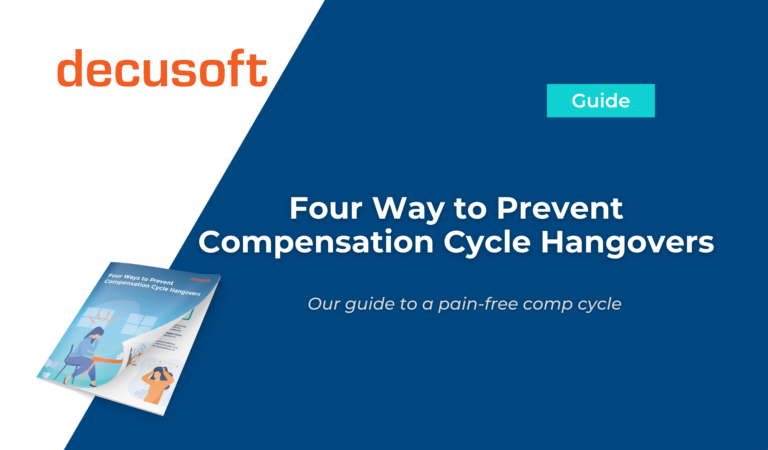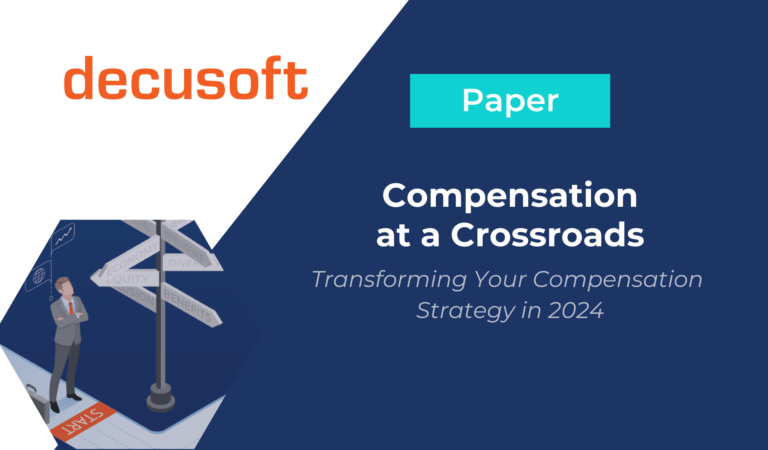The context
Anyone leading a compensation team or function is keenly aware that ‘comp planning’ activities can take the most time, and surrounding complexities can be plentiful. This is largely due to featuring the most ‘what if’ iterations, and involving the most reviewers, approvers, and communications protocols, all governed by extreme data confidentiality and sensitivity. These aspects speak to process complexity, and that’s before we bring in many other dimensions. These include new or changing comp elements, eligibility rules, salary increases and total comp guidelines, and the processes needed for collecting, matching, and incorporating market pay rates. Additionally, adjustments to market data guidance might be necessary to reflect the pressing or urgent needs of a business, such as when internal/external skills shortages exist that require paying above market rates. And, though not always getting the attention it deserves, the tail end of the comp planning process can easily introduce unforeseen execution risks related to ensuring the right people are reviewing, authorizing, and being notified throughout the process.
The complexity of every one of the above steps is often further heightened by currency conversions, the presence of equity-based compensation, fluid organizational reporting and the possibility of having to support different comp plans, or even policies at the business unit, region, and workforce segment level. Of course, all these dynamics highlight the need for compliance monitoring at nearly every step, particularly given the changeable nature of all potential inputs to comp planning. And it’s not just organizational structures and reporting lines that might be fluid. Nearly every calculation element, policy, practice, and compensable factor can be subject to change, often more than once!
Bonuses can be a major component of total comp, and this comp element has its own surrounding complexities as well. These often relate to bonus (or bonus pool) funding levels which can fluctuate year-round. Moreover, senior executives can be assigned their own bonus pool, and others earning enough to qualify for deferred compensation payouts, or perhaps having contractually guaranteed bonuses (e.g., from having to match outside comp) might also be assigned to an appropriate group. The reasons for segmenting employees into their own pools include ensuring all contractually based comp commitments (in writing or not) are properly accounted for, and the desire to make it easier to see aggregated pool allocation percentages and confirm they make sense given various lenses applied. Finally, the fact that someone could be included in multiple bonus pool groups, or that organizations frequently deal with multiple bonus types, are just other elements in a long list of potential complexities at the heart of compensation planning.
The opportunity: Purpose-built technology
Some aspects and nuances of a compensation process tend not to get mentioned in the “complexity” conversation even though they can be anything but linear in their execution. Those involved in comp planning are no doubt familiar with the need to conduct both top-down and bottom-up analyses and do so iteratively if not continuously. Moreover, they are aware of the need to present planning outcomes quickly and arrayed in any format deemed necessary for quick, well-informed decisions. And when you then factor in any or all of the moving parts highlighted above, as they change or are real-time modeled, plus the ability to easily assess downstream impacts like having the right scenario-based communication templates in place, these types of capabilities offer a huge competitive advantage. It is in the form of reliably and effectively managing the process that oversees the largest line item in almost every operating budget: compensation.
Technology customers in the comp planning domain figured out a long time ago that a spreadsheet-driven process was – best case – highly inefficient compared with cloud-based, purpose-built enterprise software; and worst case, spreadsheets impeded the planning process to the extent of compromising its main mission and purpose. There is also the common view that a compensation or total rewards system must allow the comp team to largely function independent of either an external product supplier or an internal IT team. Yes, there are those occasions that require specialized knowledge or skill related to a particular product, platform, or operating system, but these should rarely exceed twenty percent of total process execution time in the view of many comp process veterans.
And reporting and analytics certainly fall within the range of tasks that a comp tech customer should usually be able to handle on their own, as is modifying the customizable rules around ranges, limits, and ratios that govern the process, often called grids. These tools are a method for comp teams to quickly add and track any relevant data or flag any value, perhaps even add a rule that causes an approval workflow to be initiated.
When an organization asserts it is better at compensation planning than others in its industry peer group, the notion of purpose-built technology is often central to the conversation. In this case, “purpose-built” starts with the premise that while many comp process aspects might be common across organizations, just as many (if not more) process components may be unique to a specific customer organization. This is why setting out to design and bring to market a robust compensation or comp planning solution absolutely must begin with a very comprehensive and heterogeneous analysis of what can have the effect of making a comp process a bit different or more challenging for a business. Following this major and typically lengthy exercise, a comp solution vendor must then make optimal decisions about whether functionality for handling these idiosyncratic requirements should be viewed as standard design considerations, or alternatively, within the scope of configurability tool sets a customer can use to meet those nonstandard requirements.
Thus a fundamental attribute of “purpose-built” enterprise software, including in regards to comp solutions, is that these are designed for a customer to handle as many process requirements as possible without needing outside support, whether standard or unique requirements are the order of the day. And again, while occasionally needing the support of one’s product vendor or IT department to get through a complicated planning process is not necessarily a problem, the “fire drill” nature of many a comp process can make such dependencies an unwanted if not serious execution risk.
The Author
Steve Goldberg’s 30+ year career on all sides of HR process & technology includes HR exec roles on 3 continents, serving as HCM product strategy leader and spokesperson at PeopleSoft, and co-founding boutique Recruiting Tech and Change Management firms. Steve’s uniquely diverse perspectives have been leveraged by both HCM solution vendors and corporate HR teams, and in practice leader roles at Bersin and Ventana Research. He holds an MBA in HR, is widely published, and is a feature speaker around the globe. He’s been recognized as a Top 100 HRTech Influencer. Steve can be reached at SGoldberg@HRTechAdvisorySvcs.com.



